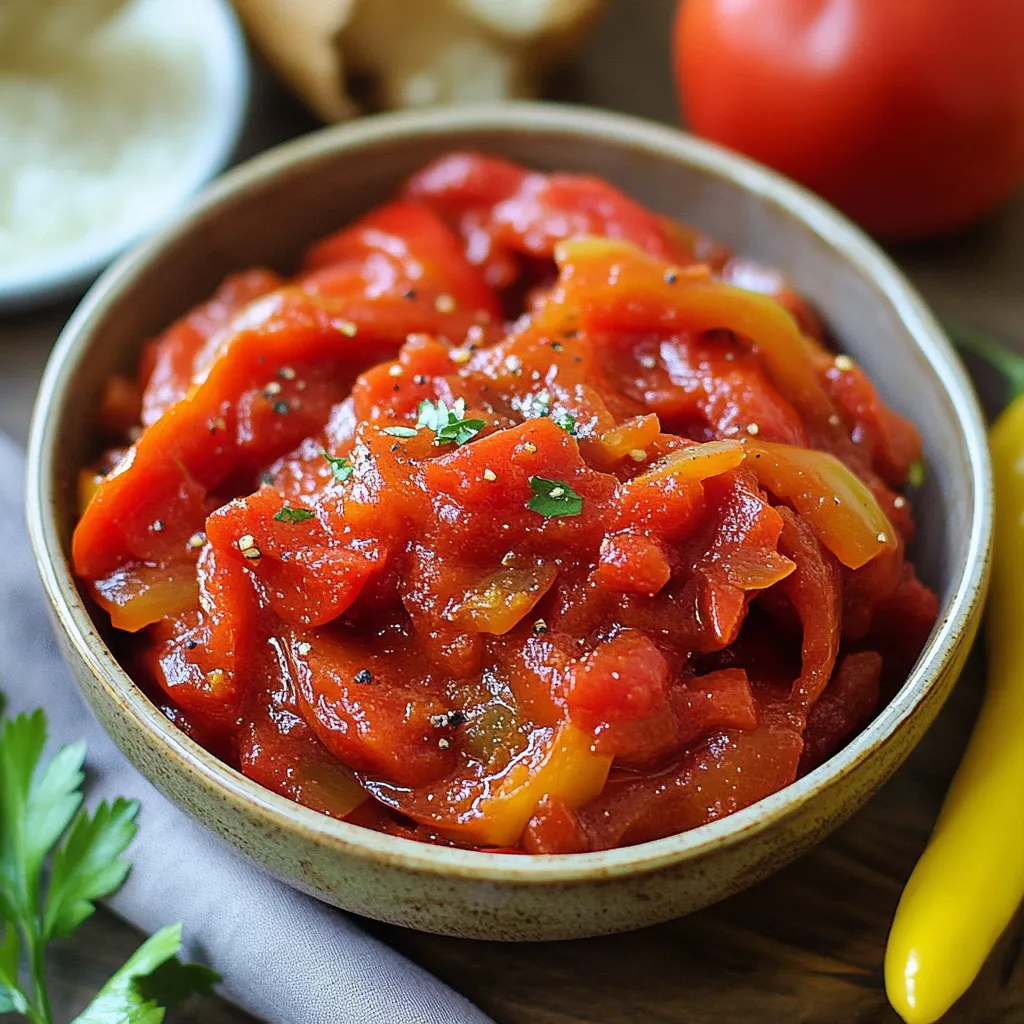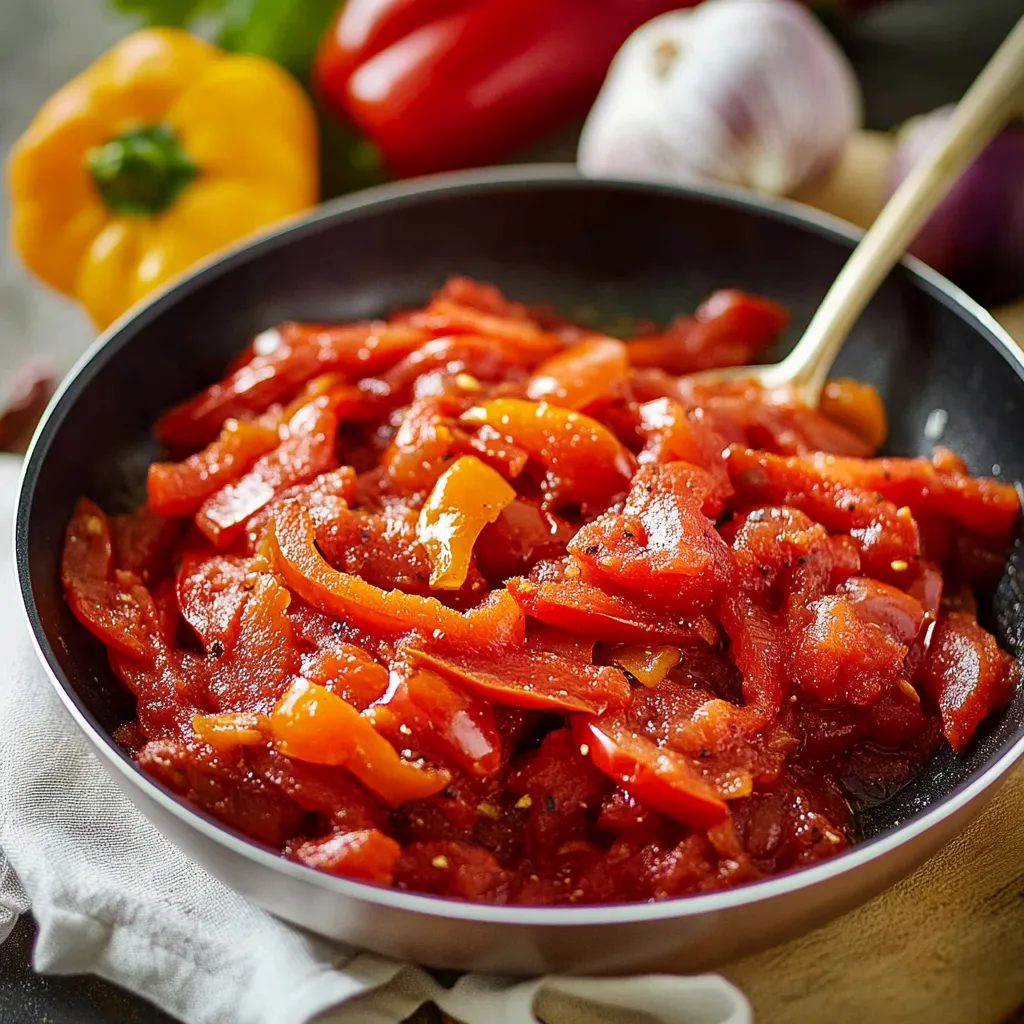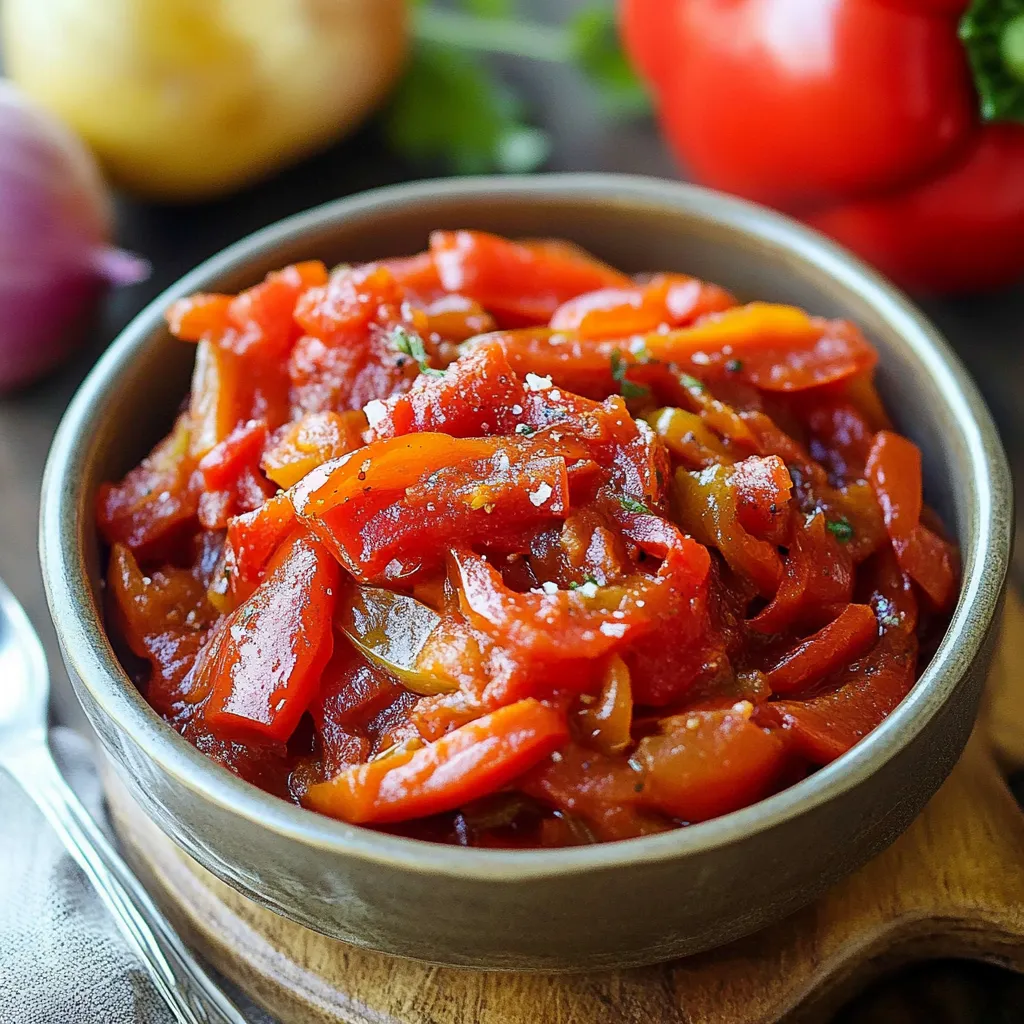 Pin
Pin
Peperonata brings classic Italian flavors together in a rustic vegetable dish. Sweet bell peppers slowly cook with onions and tomatoes until meltingly tender, creating rich Mediterranean flavors. This versatile preparation showcases the natural sweetness of peppers balanced with bright tomatoes and aromatic garlic, resulting in a traditional stewed vegetable dish that enhances many meals.
Discovering authentic peperonata at a small family restaurant in Naples changed my perspective on Italian vegetable dishes. The vibrant colors drew me in, but the concentrated flavors kept me coming back. This preparation has since become a staple in my kitchen, especially when cooking for guests who appreciate traditional Mediterranean cuisine.
Key Components
Primary Ingredients
- Bell peppers: Select ripe red, yellow or orange peppers for optimal sweetness
- Yellow onions: Thinly sliced for proper melting and texture
- Fresh garlic: Finely minced to distribute evenly
- Tomato passata: Pure strained tomatoes without additives
Seasoning Elements
- Extra virgin olive oil: High quality oil makes a noticeable difference
- White wine vinegar: Adds necessary acidity
- Granulated sugar: Balances tomato acidity
- Salt and pepper: Kosher salt preferred for even distribution
Preparation Method
- Initial Sauté:
- Heat olive oil in a heavy-bottomed pan over medium heat. Cook sliced onions with salt until soft and translucent, about 5 minutes.
- Adding Vegetables:
- Incorporate sliced peppers and minced garlic. Reduce heat and cook 10 minutes, stirring occasionally.
- Simmering:
- Add tomato passata, cover pan, and simmer gently for 20 minutes.
- Final Seasoning:
- Stir in sugar and vinegar. Simmer uncovered 5 minutes more. Adjust salt and pepper to taste.

Summer garden harvests always meant peperonata preparation in my family's kitchen. The technique passed down emphasized patient cooking to develop proper flavor concentration. The familiar aroma of peppers slowly stewing still evokes memories of traditional Italian cooking.
Serving Suggestions
Peperonata elevates simple meals with minimal effort. Mix with pasta and fresh herbs, serve alongside grilled meats, spread on crusty bread with fresh cheese, or layer into sandwiches with cured meats and mozzarella. Each application showcases the versatility of this classic preparation.
Variations
Adapt peperonata to create new flavor combinations. Add diced eggplant for traditional ratatouille elements, incorporate chili flakes for heat, mix in capers and olives for brine, include zucchini for variety, or stir in white beans for protein.
Storage Instructions
Properly stored peperonata develops deeper flavors over time. Refrigerate in sealed glass containers up to 5 days. Freeze in portioned containers with headspace for up to 3 months. Thaw overnight in refrigerator. Enhance refrigerated portions with fresh herbs and olive oil before serving.

Years of preparing peperonata have reinforced its place in traditional Italian cooking. The harmonious combination of sweet peppers and tangy tomatoes creates an endlessly adaptable dish. The methodical preparation process yields consistently excellent results that continue to impress both casual and refined palates.
Recipe Q&A
- → Can I prepare Peperonata in advance?
- Absolutely! Peperonata actually tastes even better the day after you make it, as the flavors meld nicely. Keep it refrigerated for up to three days.
- → What peppers make the best Peperonata?
- Red peppers offer the sweetest taste, but yellow or orange ones work too. Green peppers don’t suit the dish as well because they’re a bit more bitter.
- → How should Peperonata be served?
- You can serve it warm or at room temperature. Pair it with crusty bread, add it to antipasto platters, or enjoy it as a side dish.
- → Why is my Peperonata taking so long to cook?
- The cooking time depends on how thick the pepper slices are and your stove's heat level. Take your time; the peppers need to be tender but still hold their shape.
- → Is it okay to freeze leftover Peperonata?
- Yes, it freezes beautifully! Keep it in an airtight container, and it’ll stay good for up to three months.
